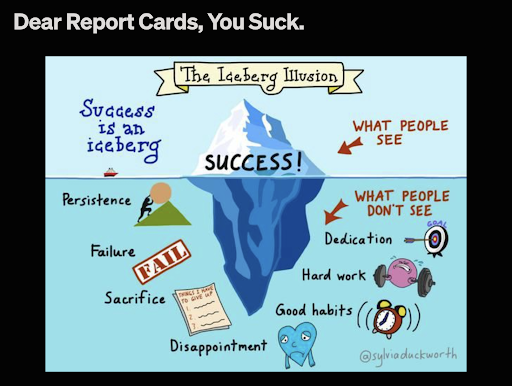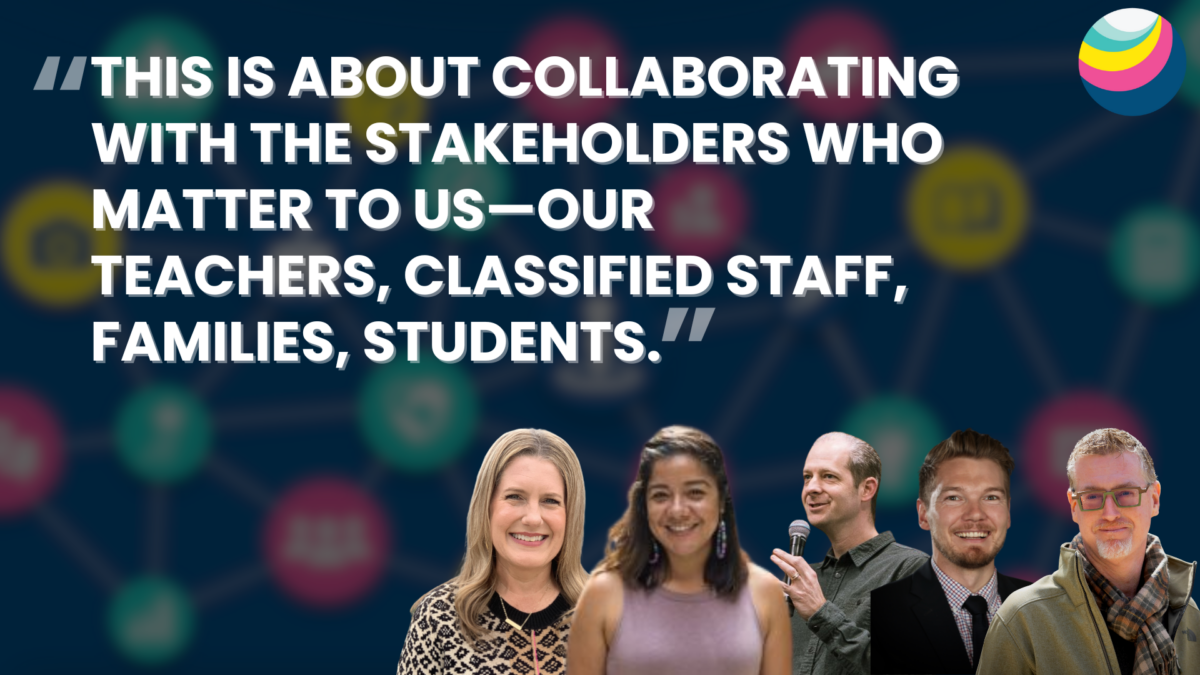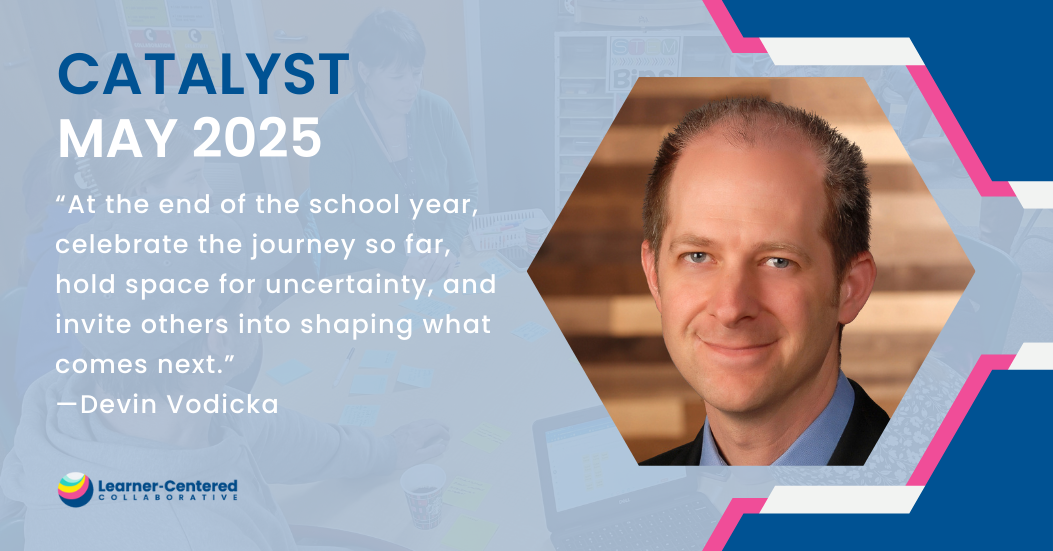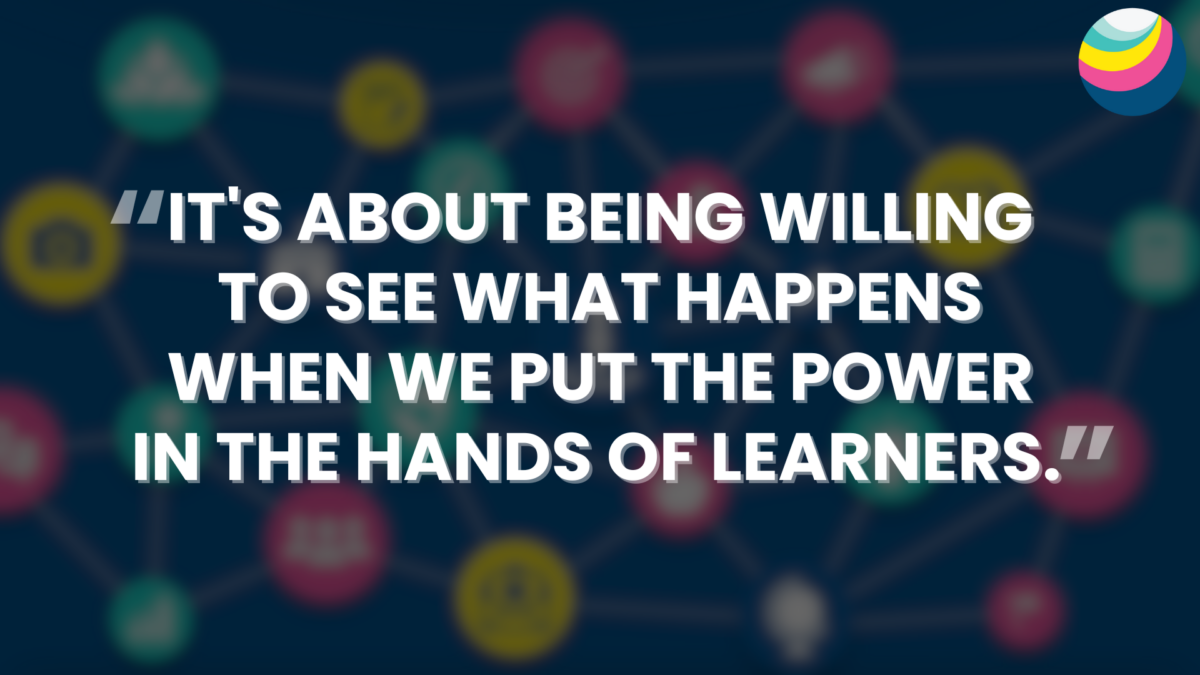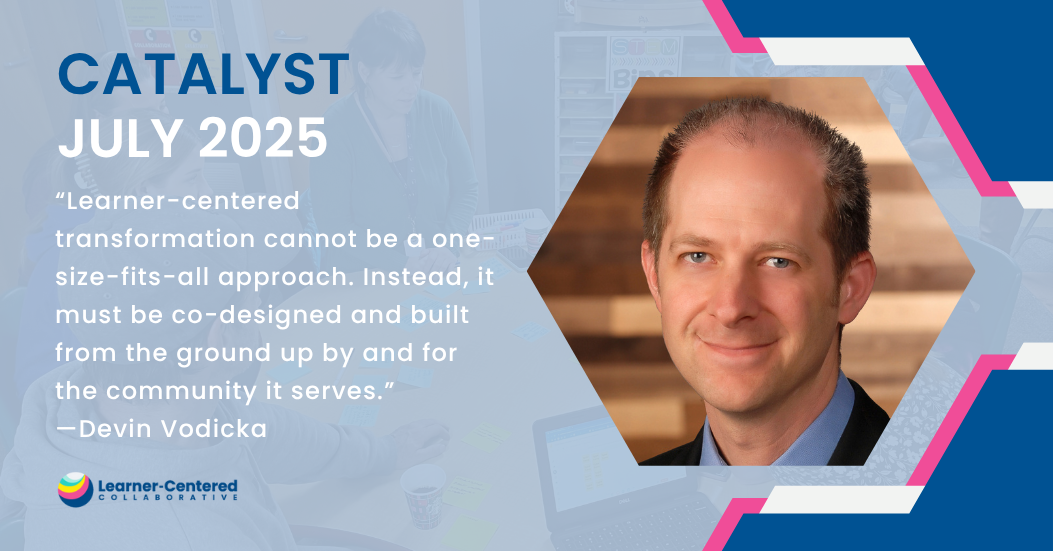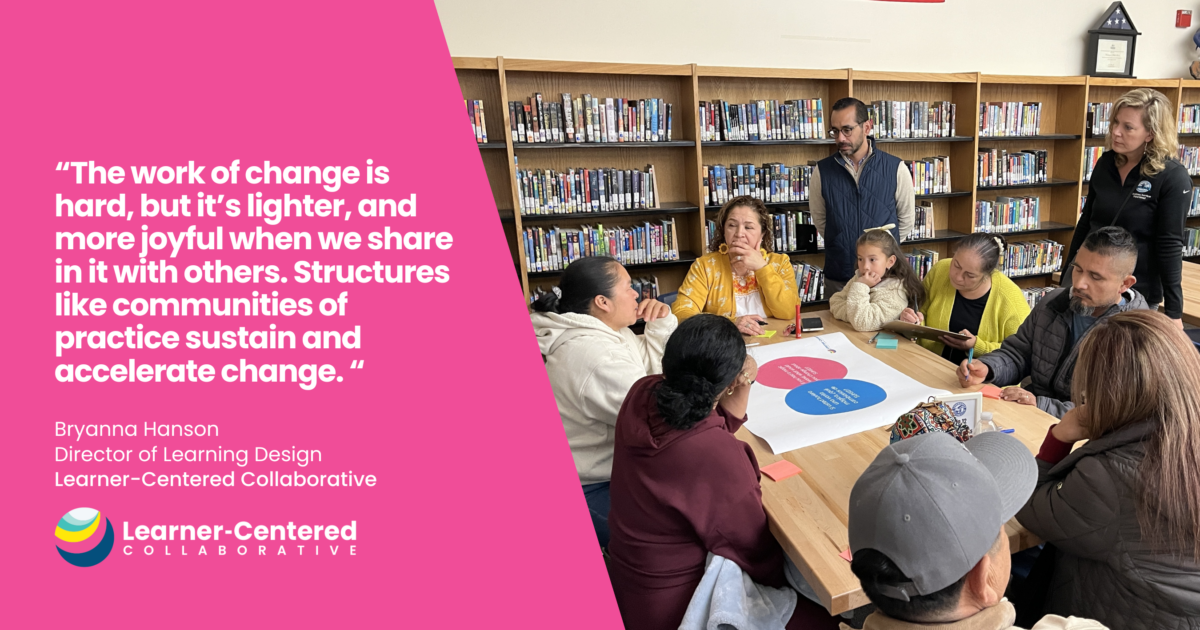4 Key Shifts from School-Centered to Learner-Centered
The pandemic created an opening for us to free ourselves of preexisting norms and expectations and enter the realm of possibility. There is an opportunity to rethink our practices, intentionally leave behind those that don’t best serve all learners and educators, and be more intentional about incorporating what matters most: relationships, connection, purpose, flexibility, agency, and authentic learning.
This paradigm shift from a school-centered model designed for compliance and standardization to a learner-centered model requires changing how we see learners and their critical role in their own learning now and throughout their lives.
Learner-centered education puts learners at the center of their own education in order to create more purposeful, personalized, authentic, and competency-based experiences that help them develop skills and agency to learn, grow, and solve problems that matter to them and others.
Here are 4 shifts that I have increasingly seen in schools as they move from school-centered to learner-centered.
Shift 1: From Standardization to Personalization
To be clear, when I say personalization it is not about programs and technology, which can often be conflated. Although technology can and does enable personalized pathways, the power of this shift is when the learner has the agency to make choices and learn in ways that meet their needs, not simply clicking through a program. This shift for me comes down to how we see learners: that we get to know and value them as individuals, rather than as a cohort of kids moving through school.
Experiences that change how kids learn in schools today rarely come straight from a textbook or program. They come from teachers who know their learners and design experiences to meet their needs based on the desired learning objectives. In spite of our understanding that no two people are the same, many systems have prioritized (and even demanded) overly structured lessons for every student to meet the same objective at the same time in the year, regardless of the individual’s unique strengths, interests, or questions. As we better understand the learning theory and celebrate the diverse talents and passions that individuals bring to the classroom, I am encouraged to see many systems moving away from strictly following textbooks and a one-size-fits-all approach to teaching and learning. I continue to see more schools and districts intentionally designing systems to empower learners to understand their unique strengths, ask more questions, and pursue their goals in order to chart their personal paths.
Shift 2: From Compliance to Learner Agency
Learner agency is about moving students from passively responding to acting with purpose to reach a desired goal or outcome. When students have an authentic purpose and audience beyond their teacher to share what they are learning, they are more motivated to learn and often go above and beyond. I am excited to see more schools moving toward structures that empower learners to share and drive their learning process through portfolios and student-led conferences. Opportunities for learners to share their work beyond the teacher in student-led exhibitions can be powerful to ensure students have an authentic audience and are doing work that has value.
We can teach necessary skills while creating experiences that allow learners to take ownership of the process. Learners have access to an abundance of resources and experts and therefore can learn in ways that extend beyond the expertise of one teacher or classroom. By tapping into those resources, we can create more experiences that can allow students to apply their newly learned skills in ways that are meaningful and relevant to them and others.
Access tips for empowering learners with agency in 3 High-Impact, Low-Lift Ways to Foster Learner Agency
Shift 3: From Product to Learning Process
Grading is a battle for many teachers and students, and it is a process steeped in tradition that often fails to communicate what a learner knows and can do. I love this reflection from a 7th grader who shared his experience in a blog post, Dear Report Cards, You Suck. This post exemplifies a major challenge with assessment procedures and reporting of what students know and can do. He says he realized that he is actually a B student, not a D student because of how he got to show what he knew and how his work was assessed.
The only reason you can easily read this is because of my best friend, spell check. My spelling difficulties make my handwriting hard to read. In the past, I’ve done most of my writing in a textbook without revisions. So, of course, I was going to get a D.
Having access to technology has changed my world. Being able to type my work and click on a red line to fix a wrong word has suddenly made my work correct. Feedback is another extremely helpful tool. When I was stuck or when I’m just finished, I used feedback to fix the things that were wrong or to add things that I may not have thought of. Feedback is an awesome tool!
When we only focus on the end result, we fail to communicate to learners the importance of sharing ideas early, getting feedback, and making revisions in order to improve. If we don’t honor the learning process, we communicate that we either get it or we don’t. As a result, we are negatively impacting learners’ confidence, creativity, and investment in their own growth and learning. Increasingly, there is a focus on failure in the learning process—and it is certainly part of it—but the bigger picture to me is acknowledging that success isn’t black and white. Learning is a process and it takes time, effort, and growth to achieve success, even when we don’t see it.
Dive into assessment practices that promote learning in Uncovering the True Purpose of Assessment.
Shift 4: From Content Delivery to Authentic Application
We all have a finite amount of resources and are accountable to meet specific objectives within a given period. Foundational knowledge and skills need to be developed, but we also need to balance these with the foundational skills we want all students to attain while allowing for authentic application of those skills and content. Consider this example of @msnunenkamp‘s 5th grade class where instead of completing a packet and filling in worksheets, they did research to better understand the impact that humans are having on the environment and created a Public Service Announcement (check it out here) to help others understand and do something to improve the environment.
In a strictly standards-based paradigm, the learning goals are primarily the predetermined standards or subsets of standards. While this is a good start it is misaligned with the world we live in, Employers, vision statements, and even basic common sense allude to developing productive and empowered citizens. We need to prioritize learning experiences that not only develop knowledge but also attend to the skills, interactions, and mindsets we know are critical for students to develop to be successful in our evolving world.
These shifts give me hope as I see so many educators focused on what’s best for learners. Creating the conditions that allow educators to be nimble and create learning experiences that reflect the context and the resources to best meet the needs of all learners is the greatest shift of all.
Let’s discuss these shifts in the context of your learning community. Get in touch with our team!

